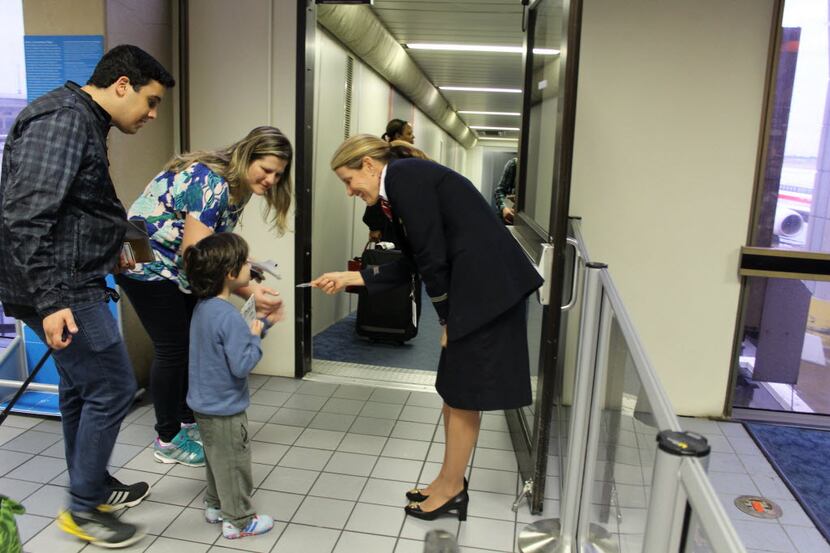U.S. flight attendants experience higher rates of several types of cancer compared with the general public, according to a new study that calls attention to the potential risks of their unique in-cabin working environment.
The Harvard University study, described as one of the largest and most comprehensive on the subject to date, found flight attendants had a higher prevalence of each of the seven broad cancer types examined, particularly breast cancer, melanoma and non-melanoma skin cancers among females.
The findings, published Monday in the journal Environmental Health, are all the more striking because flight attendants typically show lower rates of obesity and smoking than the general public, the study's authors said. As of 2016, U.S. airlines employed about 116,600 flight attendants, according to federal data.
"Work is such an important part of people's lives. At home you have more control over your environment for the most part. At work most of the things are decided for you," said Irina Mordukhovich, a research fellow at the Harvard T.H. Chan School of Public Health and the study's corresponding author. "[Flight attendants] have a pretty unique mix of potential carcinogens they're exposed to. It's not widely known and it's not regulated the way it could be."
Those carcinogens most notably include higher doses of cosmic radiation that flight crews are exposed to by virtue of their long hours spent working at altitude, a situation that can be exacerbated on flights at high latitudes or over the Earth’s magnetic poles and is of particular concern for pregnant women.
Air crews have the largest average annual effective dose of all radiation-exposed workers in the U.S., according to 2009 findings by the National Council on Radiation Protection and Measurements.
While European regulators require monitoring of aircrews’ radiation exposure and changes to their work schedules if it exceeds certain thresholds, no such rules exist in the U.S.
Other potential risk factors include sleep-cycle disruption brought on by overnight flights and crossing time-zones, past exposure to secondhand smoke in the cabin and ongoing exposures to chemicals such as pesticides, which are used to sterilize cabins on some international flights.
Unions for flight attendants at Southwest and American airlines identified crew fatigue as a top health issue that needs to be addressed, something the pending FAA reauthorization bill could do with required minimum rest times.
Sara Nelson, president of the country’s largest flight attendants union, said the study’s findings emphasize the need for more education and more preventative action.
"Neither OSHA nor the FAA require airlines to educate flight attendants about onboard radiation exposure or offer protections during pregnancy, cabin air can be contaminated, and cabin crew fatigue is prevalent," Nelson, president of the Association of Flight Attendants-CWA, said in a statement. "That is unacceptable and we won't stop working to fix it."
The new study looked at past occurrence of cancers in flight attendants rather than their risk of developing cancer and its authors cautioned against drawing any conclusions about specific causes. It's part of a broader Harvard research effort dating back to 2007 that’s exploring numerous aspects of flight attendants’ physical and mental health and well-being.
Researchers conducted a survey of 5,366 U.S. flight attendants in 2014 and 2015 that asked them to self-report on health outcomes, including past cancer diagnoses, work experience, employment history and personal characteristics. The sample group was more than 80 percent female and had an average tenure of 20 years, with 91 percent actively employed.
The group included some flight attendants who were part of the original 2007 study, as well as new participants recruited at five large U.S. airports, from airline unions and using social media. The flight attendants were then compared with a sample population pulled from an annual survey of about 5,000 U.S. residents conducted by the U.S. Centers for Disease Control and Prevention.
The findings build on a limited body of research that “overall point[s] toward associations” between in-flight exposure as a flight attendant and increased rates of certain types of cancers.
“More studies are needed,” said Mordukhovich, one of the study’s authors. “We’re hoping it adds to the discussion of what can be done and how can we think of things in a way that will benefit people.”

